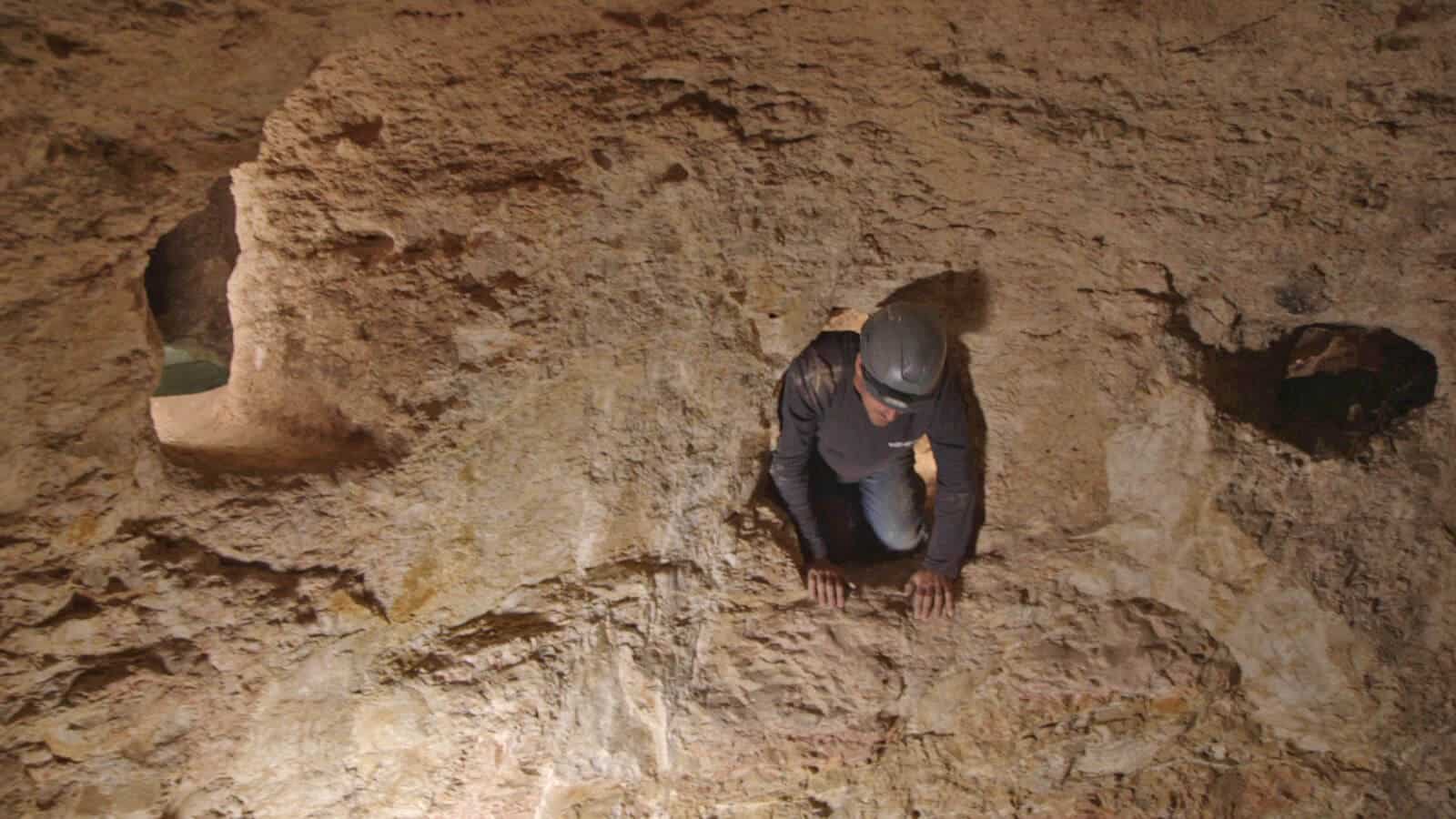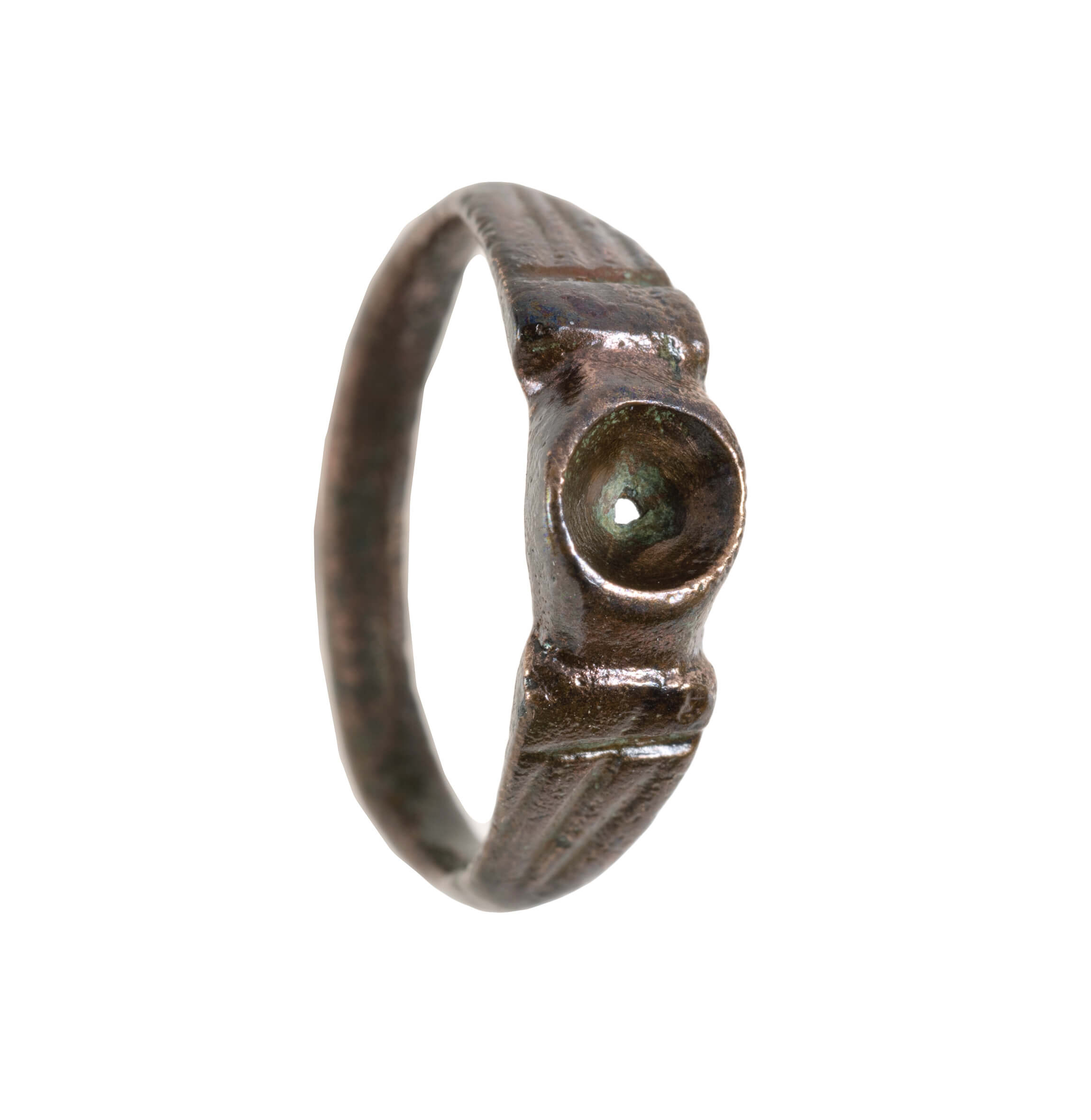This is the largest hiding system discovered so far in the Galilee. In the excavations, finds are discovered that provide a glimpse of dramatic moments in the history of the Jewish people
Archaeological excavations with the participation of students, residents and soldiers that have been going on for the past few months in Hukok near the Sea of Galilee, provide a glimpse into dramatic moments in the history of the Jewish people: the preparation of underground shelters (similar to today's dimensions) in preparation for the outbreak of the Jewish rebellion against the Romans led by Bar Kochba, in 132 AD .
The excavations show that as part of the preparations of the Jews to fight against the Roman rule, both in the Great Revolt and in the Bar Kochba Rebellion, the residents of the settlement of Hakok converted the water cisterns that were dug during the Second Temple period into hiding systems. In addition - in their distress, they canceled a mikveh tarah, and in its place - carved a branched hiding system, which allowed safe movement under the houses, in winding, narrow and extremely low caves. In this underground system, which is the largest and most impressive discovered in the Galilee, there are about eight hiding spaces, and its chambers are turned at angles of ninety degrees (in order to make it difficult for the Roman enemy, armed with heavy equipment, in pursuit of the fugitives). In the excavations, hundreds of fragments of pottery and glass were discovered, a particularly impressive ring decorated with a gemma (a gem that was attached to the ring but was not found) of a woman or girl that seems to have been dropped from her hand, and other findings that provide a glimpse of the dramatic moments from the 2nd century AD.
The settlement Hakok is recognized in the study of antiquity as a Jewish settlement since the Roman period - about 2000 years ago, and was used as such in later periods as well; The Jerusalem Talmud and the Babylonian Talmud mention the names of sages from the 3rd and 4th centuries AD who worked there, such as Rish Lakish, Rabbi Pinchas and Rabbi Hezekiah. On the top of the hill - near the hiding place, a synagogue dating back to the Byzantine period was uncovered, with magnificent and unique mosaics. This synagogue has been excavated since 2011 by a delegation from the University of North Carolina led by Prof. Judy Magness.
The purpose of the archaeological excavation initiated by the Antiquities Authority in Hakok, funded by the Ministry of Heritage and in cooperation with the Safed Academic College and the National Fund for Israel, is to reveal the rich history of the site while involving the future generation in discovering its past, and finally - to make the site accessible to the public. The sophisticated hiding system that was excavated is one of the important heritage sites that will be developed in the Galilee, which will reveal to the general public the defense methods of the Jews during this period.
"As part of the Antiquities Authority's vision to connect the public to the heritage near their homes, we turned the dig into the hidden system in the law into a community dig," Dr. Einat Ambar-Armon, Director of the Archaeological-Educational Center of the Antiquities Authority in the Northern Region, says. "The excavation combines students from the Land of Israel and Archeology major, students from the Safed Academic College, volunteers from the Israeli Haaretz Cave Hunters Club, local residents volunteering at the site, and even soldiers from the Weasel Unit - the underground commando unit of the IDF's Combat Engineering Corps, who applied the their skills also for this important purpose".
"The concealment system provides a glimpse into the difficult times in the Jewish community in Hukok itself and in the Galilee in general," they say The managers of the excavation, Uri Berger from the Antiquities Authority and Prof. Yanon Shabtiel from Safed Academic College. "But the story that emerges from the site is an optimistic story of an ancient Jewish settlement that survived historical upheavals and could have had them," they say. "This is a story about residents who, even after their freedom was lost, and after severe rebellions, they finally emerged from the hiding places in which they were hiding, and established a prosperous village at the top of the hill, in the center of which is one of the most magnificent and impressive synagogues known in the region, and even in the whole country."

Finding the branched hiding system may contribute to the decades-old research debate; Until now, researchers have disagreed on the question of whether the Bar Kochba rebellion also reached the Galilee, or whether it remained in the center of the country. Researchers Prof. Yanon Shabtiel from Safed Academic College and Uri Berger from the Antiquities Authority date, based on various findings, the internal parts of the hiding system to the days of the outbreak of the second rebellion, and to the insight that some of the ancient facilities inside it were also used during the first rebellion. "It is not clear if the system was used as a refuge during the second rebellion itself, but it certainly seems that it was prepared for it," they say. "We hope that further excavations will solve the question."
According to Eli Escozido, director of the Antiquities Authority, "The Antiquities Authority sees the enacted site, for all its discoveries, as a flagship project, which will be a magnet for tourists from Israel and the world. Together with our partners in the Ministry of Heritage and the National Fund for Israel, the site - with all its parts and heritage - will be presented to the public."
According to Shelli Ben Yishai, director of the northern region of KKL-Junk "In light of the findings of the excavations and the great potential inherent in the Hakok site, the National Fund for Israel is promoting the drawing up of a detailed plan and planning the development of the site and turning it into a unique, managed and regulated site for receiving an audience on archaeological tourism in Israel and around the world. A legal site is a model for cooperation between nature, tourism and archeology in cooperation with the Antiquities Authority and the Jordan Valley Regional Council.

More of the topic in Hayadan:
- An ancient industrial area was uncovered in student excavations in Hakok in the Galilee
- Researchers went to photograph an inscription in a cave near Ein Gedi and also found there a weapon cache from the time of the Bar Kochba rebellion
- "He was a hero, he called the sparrow" - really?!
- Papyri from the period of the Bar Kochba rebellion were discovered in Ein Gedi
- With God's help: what is the real name of the hero LG Ba'omer
